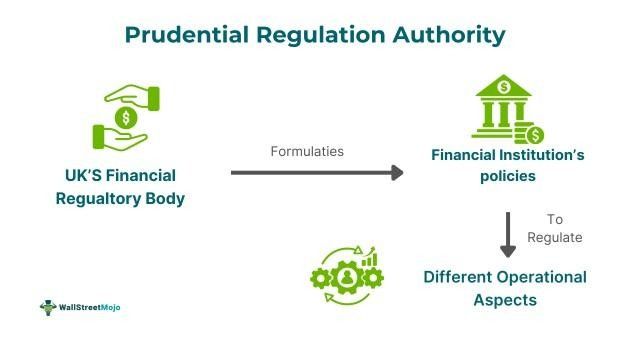Table of Contents
Key Takeaways
- Prudential Regulation Authority (PRA) supervises financial institutions' policies, ensuring safe, resilient, and robust financial services plus products for customers, building trust and reliance.
- It contributes to consumer confidence and policyholder protection, promotes financial company robustness, prepares firms for economic turmoil, and manages insurance holders.
- Its approach & objective focuses on ensuring capitalization, efficient risk management, financial stability, addressing major risks, and fostering trust and resilience in the financial sector through collaboration and transparency.
- It's responsible for prudentially regulating all financial companies, while the FCA regulates the conduct of financial companies for consumer protection and market integrity.
Objectives And Responsibilities
Prudential Regulation Authority UK has the following objectives and responsibilities:
- PRA must ensure and promote financial companies' robustness and safety under its watch.
- It prepares financial firms to stay adequately capitalized and liquid to remain resilient against economic turmoil.
- It manages the safety and trust of all insurance holders and depositors of more than 1500 financial institutions like insurers and banks.
- It is responsible for intervening where necessary, setting standards, and monitoring compliance to stabilize the financial sector.
- It also contributes to building consumer confidence in the financial system and resilience of the UK financially.
- It contributes to obtaining an appropriate level of policyholders' protection.
Approach And Principles
PRA approach and principles are listed below:
- It has a judgment-based and forward-looking approach to overseeing, centered on issues and firms creating major risks.
- Its regulatory principle involves sustaining adequate capitalization by firms, encouraging efficient risk management and conserving financial stability.
- It creates and implements high benchmarks to safeguard insurance policyholders and depositors, strengthening confidence in the financial sector.
- It rectifies approaches and policies with respect to evolving market conditions and financial risks for impactful supervision and regulation.
- It also collaborates with other regulatory bodies and brings transparency and accountability to the financial sector to build trust and resilience.
Challenges And Impact
PRA faces challenges and has impacted the finance sector as listed below:
- It mandates sufficient liquidity and adequate capitalization, making financial firms more stable.
- It faces challenges ensuring compliance and setting up stringent standards in the finance sector during current evolving business models and financial environment.
- International and local firms under the prudential framework of the UK build trust amongst themselves through effective regulation of PRA.
- Many challenges come up for PRA due to its systematic approach to untested and novel business models comprising higher scrutiny and proper controls ensuring good governance and stability.
- Moreover, PRA has to go through continuous challenges during smaller bank's simplification of regulatory needs.


